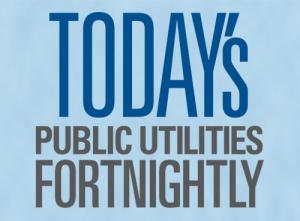Posted Feb 26:

A Democratic Party frontrunner in the presidential nomination race is Senator Bernie Sanders. Which means that those of us that work every day in utility regulation and policy had best take a close look at the Senator's promised revolution in our field.
And it sure would be a revolution. If only because it commits to a hundred percent sustainable energy for both the energy and transportation sectors of the economy — zeroing out all coal, oil and natural gas combustion — by no later than 2030.
That is, within a little less than nine years of January 20, 2021, the upcoming inauguration day for the president of the United States. That's not very much time considering this commitment and the radical transformation detailed on the Senator's website.
How would this transformation happen? As Ronald Reagan was fond of saying, "the nine most terrifying words in the English language are: I'm from the Government, and I'm here to help."
Sanders' plan would have the federal government spend $1.52 trillion on renewable energy, $852 billion on energy storage, and $526 billion on the grid.
Plus $2.18 trillion on weatherization of low and moderate-income homes and businesses, $964 billion on electrifying their homes and businesses, $2.09 trillion in grants so they purchase electric vehicles, $681 billion so they trade in their old cars, $85.6 billion for charging stations, and $100 billion to decrease the cost of a new electric vehicle to at most eighteen thousand dollars.
Plus $407 billion in grants so school districts and transit agencies switch completely to electric buses, $216 billion to switch all trucks to electric, and $30 billion to decrease the cost of batteries for the grid.
In case you're wondering, all this adds up to $9.652 trillion. Or over a trillion dollars per year of federal funding during the nine-year period between inauguration day next January and January 1, 2030. This amount would increase the federal government's total expenditures by about twenty five percent. Aside from the additional interest on the incremental debt of the federal government if deficit-financed.
The instruments for the transformation of the nation's electric generation in nine years from sixty-three percent coal, oil and natural gas combustion to zero percent would be the Bonneville Power Administration, the Western Area Power Administration, and the two smaller power marketing administrations of the U.S. Department of Energy. Plus a new gigundo one for the states that presently do not have a PMA, which are all those states from Minnesota and Iowa east to Maryland and then north to New England. As for Florida, Alaska and Hawaii, which would still be without a PMA, the Senator's plan is mute.
These PMAs would own the massive renewable capacity to be built in the remaining nine years of the decade and sell its generation to public power and coop utilities and "other existing utilities that demonstrate a commitment to the public interest." Investor-owned utility customers — a large majority of the nation's homes and businesses — should hope that their utilities will satisfy these qualifications, or else go out and buy a lot of candles.
The Senator's plan requires that all the homes and businesses that heat and cook with natural gas, fuel oil and propane combustion, which are a majority of the nation's homes and businesses, switch to electric heat and cooking in the remaining nine years of the decade. Except for the nation's mobile homes. The Senator plans to replace each and every one of them with zero-energy modular homes.
As if all of these actions aren't tough enough, the Senator would stop the building of new nuclear plants — there are two units being completed presently — and stop renewals of the operating licenses for existing plants. Which begs the question, of particular interest to those of us in utility regulation and policy. Who gets stuck with the bill for the stranded costs of these plants and, especially, all the many hundreds of plants fueled by coal, oil and natural gas that the Senator insists be shut down by January 1, 2030?


